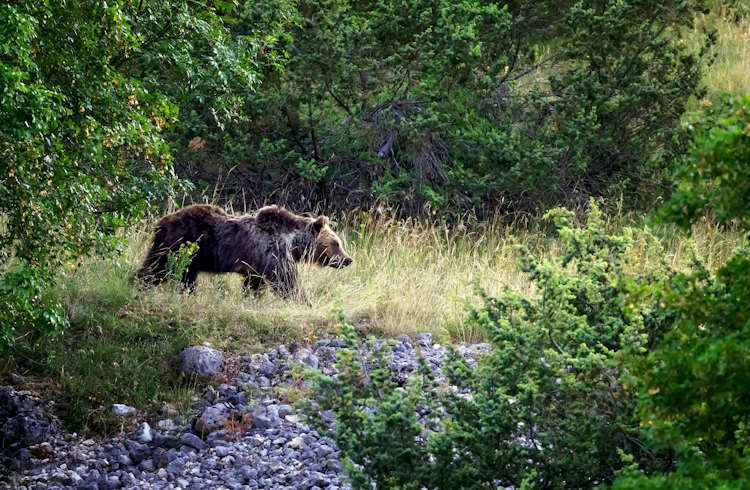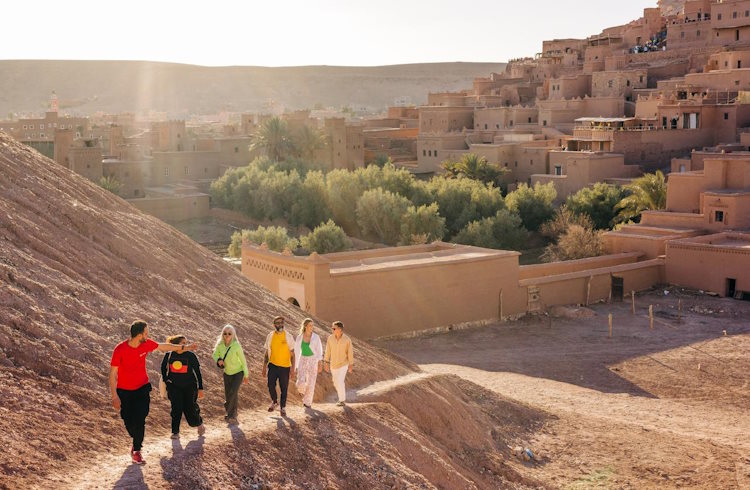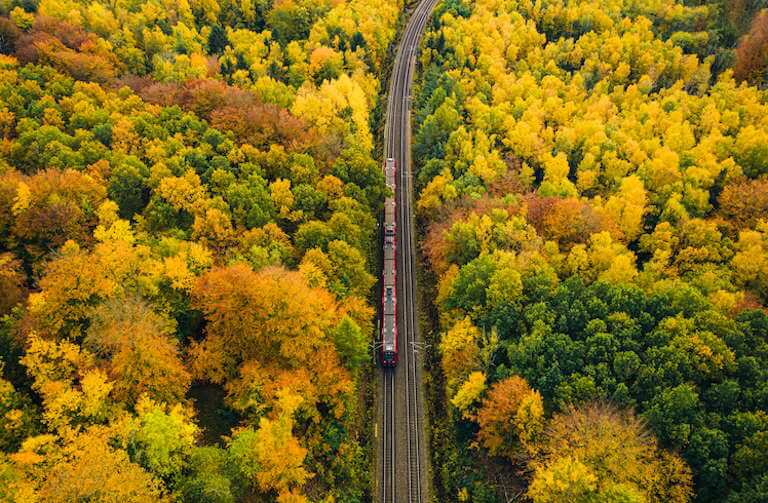11 Sustainable Travel Trends to Look Forward to in 2024
With the new year comes fresh opportunities to travel more responsibly. Discover new wildlife initiatives, innovations in transport, and eco-friendly tours that benefit the traveler as well as the planet.
 Photo © Getty Images / Gennaro Leonardi
Photo © Getty Images / Gennaro Leonardi
Travel never stands still. Movement, change, and adaptation are in its nature. But after another year in which more parts of the world experienced extreme temperatures, weather events, and natural disasters – while travel continued its post-pandemic boom – it could be time for a reality check.
It seems we’ve reached a fork in the road. In one direction, this scenario: our wanderlust increasingly curtailed as the climate crisis affects more destinations more often in more unpredictable ways. Or, the path we must take, collectively and individually: a fresh approach to travel, one that consciously prioritizes people, animals, and the planet we depend on – and makes travel more enriching for us all in the process. In some parts of the travel industry this is already happening. Here are 11 changes we can look forward to in 2024 and beyond.
- A new era for wildlife protection
- Climate-resilient destinations
- A wilder Europe
- More sleeping on trains
- Ancient stories told in new ways
- Carbon labeling
- Protecting (not just planting) trees
- Coming soon(ish): Four more sustainable travel trends
A new era for wildlife protection
In a radical move promising to help travelers find ethical wildlife-watching destinations, reduce animal suffering, and involve local communities in protecting wild animals and their habitats, World Animal Protection and the World Cetacean Alliance launched Wildlife Heritage Areas in October.
The project is an extension of the successful Whale Heritage Sites program that has combined wildlife tourism and whale and dolphin conservation at 11 marine reserves worldwide since 2015. There are already three Wildlife Heritage Areas – two in the Amazon (the Night Monkey Heritage Area in Peru-Colombia and the Uakari Heritage Area in Brazil) and the Marsican Bear Heritage Area in Ambruzzo, central Italy, for critically endangered Marsican brown bears – with more to follow, designated by a network of wildlife experts, community leaders, and responsible tourism stakeholders who will ensure that wildlife-viewing experiences in each Area meet the highest animal welfare standards, adhere to experts’ wildlife-watching guidelines, and benefit local communities.
Climate-resilient destinations
While we’ve long known about low-lying cities (Venice, Amsterdam) and island nations (the Maldives, Fiji, Tuvalu) at risk from rising sea levels, “climate-resilient destinations” are fast becoming a thing. Earlier this year Architectural Digest evaluated the climate resilience of 50 major American cities, using data from the University of Notre Dame that included each city’s elevation, vulnerability to extreme weather events and clean energy policies, among other factors.
Denver, Salt Lake City, Austin, and Seattle all made the top 10; Miami, Los Angeles, and New York, all hugely popular tourist destinations, were in the bottom 10. Meanwhile dozens of Canadian cities, including Vancouver and Toronto, are applying the “sponge city” concept, originally developed in China, to help urban environments withstand the effects of intense rainfall events through measures such as green roofs and holding ponds.
A wilder Europe
In October, Europe’s largest network of protected natural areas, the EUROPARC Federation, partnered with Rewilding Europe to scale up rewilding already happening in some of its national parks, biosphere reserves and other protected areas, which cover a whopping 1.2 million km2 of Europe’s land mass, an area the size of France and Spain combined.

The rationale is that if we’re serious about tackling the biodiversity and climate crises, it’s not enough to simple protect wild places. We need to “rewild” them by working with local communities to, say, reintroduce keystone species such as wolves and wildcats, regenerate forests, restore natural fire regimes and watercourses, and encourage natural grazing patterns. Rewilding Europe also offers trips in rewilded landscapes that include rewilding walks in Scotland, wildlife tracking in Romania, and hands-on fieldwork in Italy.
More sleeping on trains
This year France made official its world-first move to ban short domestic flights to cut emissions. As a result, and because of a rising climate-consciousness among travelers, there’s been a boom in rail travel in Europe, night trains in particular.
Eurail and Interrail recently announced that its passes, valid for train (and ferry) travel in 33 countries, can now be used on overnight trains run by Dutch-Belgian start-up European Sleeper, which launched in May this year, including on its inaugural Brussels-Amsterdam-Berlin route. In March 2024, European Sleeper will extend this route to Dresden and Prague, and plans an Amsterdam-Barcelona route for 2025. Meanwhile, Eurostar, the network that links the UK and mainland Europe, has a new winter service (running December-February) that aims to help skiers reduce their emissions on trips between London and the French Alps.

Ancient stories told in new ways
It seems counterintuitive: using 21st century technology to showcase a culture more than 65,000 years old. But that’s the beauty of Wintjiru Wiru: it’s an ancient and contemporary cultural experience.
Launched in May this year on Anangu country near Uluru in central Australia by the Indigenous-owned Voyages Indigenous Tourism Australia, it’s also a world first. Never before has any Indigenous story been told using lights, lasers, and projections, on such a large scale; more than 1100 choreographed drones criss-cross the starry outback sky over Uluru every night, in the two shows, with narration in the local Pitjantjatjara language.
Meanwhile, visitors take in the spectacle from a purpose-built open-air theatre designed to rest lightly on the dunes to allow sand and wildlife to move naturally underneath. This could just be the future of Indigenous storytelling.
Carbon labeling
“You can’t manage what you don’t measure,” says Sam Bruce, co-founder of Much Better Adventures which, in 2021, became the first global travel company to add carbon labels to each of its 160 adventure trips. The company’s six-night hike in Slovakia, for instance, produces 246kg of CO2 per person, taking into account emissions produced by local transport, accommodation, meals, and activities.
Displaying a trip’s carbon footprint not only helps travelers make better decisions about how we travel, it helps travel companies reduce their emissions; Much Better Adventures is now working towards halving its average carbon footprint to 17kg per person per night across all its trips by 2030.
Other travel brands have been slow to follow but this year Intrepid Travel, the world’s largest travel B Corp, introduced carbon labeling on 500 (about half) of its trips – including its top 100 itineraries such as the 13-day Morocco Uncovered tour (42.85kg of CO2 per person per night) – with plans to show carbon emissions for the rest of its trips by the end of 2024, in addition to various decarbonization measures like reducing internal flights and discontinuing scenic flights on all its trips in 2024.

Protecting (not just planting) trees
It’s a common refrain at hotels everywhere: if you stay a night, we’ll plant a tree. GAdventures also introduced a Trees for Days program this year: for every day you’re on one of their trips, GAdventures plants and, importantly, maintains a tree in one of 17 community-led projects in deforested countries like Madagascar and Bolivia.
But tree-planting is complicated. Deforestation is certainly a major cause of climate change and trees are natural “carbon sinks,” but the right type of seedlings aren’t always planted in the right place and don’t always grow into big trees; a tree has to be 10-20 years old before it makes a difference to the environment. And plantation forests sequester less carbon than natural forests. “The earth grows its own trees better than we can,” says American ecologist Robert Langellier.
So, some travel companies are now protecting existing forests rather than planting trees. Newly launched conscious hotel booking platform GoKinda is one of them; it protects five trees for every booking, through One Tribe, a global B Corp helping businesses preserve tropical rainforests and biodiversity by working with Indigenous communities who live in those forests.
Coming soon(ish): Four more sustainable travel trends
- Zero-emissions flight. Sweden’s government recently announced that all domestic flights will be fossil fuel-free by 2030, international flights by 2045. Going a step further, Airbus is developing the first zero-emissions commercial jets, to be powered by hydrogen, which they hope to roll out by 2035. Meanwhile UK-based Hybrid Air Vehicles plans to launch a helium-filled, hybrid-electric airship, the Airlander 10, by 2027 with zero-emissions airships to follow by 2030.
- Carbon-zero destinations: Queenstown in Aotearoa/New Zealand is on track to become the world’s first carbon-zero destination by 2030 with decarbonization initiatives such as electric jetboats, hydrogen-powered ferries, and EV coaches, bikes and cars. Hainan in southern China is also angling for the title.
- An Arctic Ocean reserve: Set up by Arctic explorer Pen Hadow, the 90 North Foundation hopes to establish the world’s largest wildlife reserve, a 2.8 million square kilometre Central Arctic Ocean Marine Reserve, around the North Pole by 2037 to safeguard the biodiversity and ecosystems of the Arctic, the fastest-warming region on Earth.
- Carbon passports: By 2040, according to Intrepid Travel’s latest Sustainable Future of Travel report, we can expect to have “carbon passports” keeping us within personal carbon allowances of around 2.3 tons a year (equivalent to a return economy flight from Sydney to Bangkok), well below current per capita emissions in the US (16 tons), Australia (15 tons) and the UK (11.7 tons).
Related articles
Simple and flexible travel insurance
You can buy at home or while traveling, and claim online from anywhere in the world. With 150+ adventure activities covered and 24/7 emergency assistance.
Get a quote


No Comments